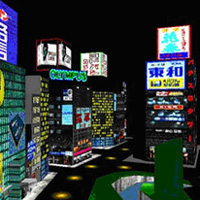Softmobility/Cybermobility New Urban Activities and Digital Mobility
Abstract
The potential of substituting the physical transfer by using telecommunication was suggested already at the end of the 19th century. Replacing the physical transfer with a telematics flow, moving the bits and not the atoms (Mitchell, 1995), can be considered a form of “sustainable mobility” that does not produce strong impacts on the urban physical system. The cybermobility can be therefore considered as a form of soft mobility which allows a virtual transfer in order to reach an urban activity for a specific service (administrative, training, business, tourist, information one etc.). Unfortunately the several studies on this subject do not confirm the replacing effect. This paper suggests the overturn of the thought by using an approach which chiefly considers the city activities (functions) and their power of acftracting the flows of mobility inside the urban system. In particular, it should be considered the possibility that those functions could undergo a process of “virtualization” thanks to the spreading of new technologies in the way through which citizens use the city. The possibility of working out procedures capable of quantifying the modifications produced and calculating the (real and/or potential) values of transformation on the territory offers new opportunities of governing also the “invisible” transformations generated by the spreading of net-society.Downloads

Copyright (c) 2014 Tema. Journal of Land Use, Mobility and Environment

This work is licensed under a Creative Commons Attribution 4.0 International License.
Authors who publish in this journal agree to the following:
1. Authors retain the rights to their work and give in to the journal the right of first publication of the work simultaneously licensed under a Creative Commons License - Attribution that allows others to share the work indicating the authorship and the initial publication in this journal.
2. Authors can adhere to other agreements of non-exclusive license for the distribution of the published version of the work (ex. To deposit it in an institutional repository or to publish it in a monography), provided to indicate that the document was first published in this journal.
3. Authors can distribute their work online (ex. In institutional repositories or in their website) prior to and during the submission process, as it can lead to productive exchanges and it can increase the quotations of the published work (See The Effect of Open Access)
